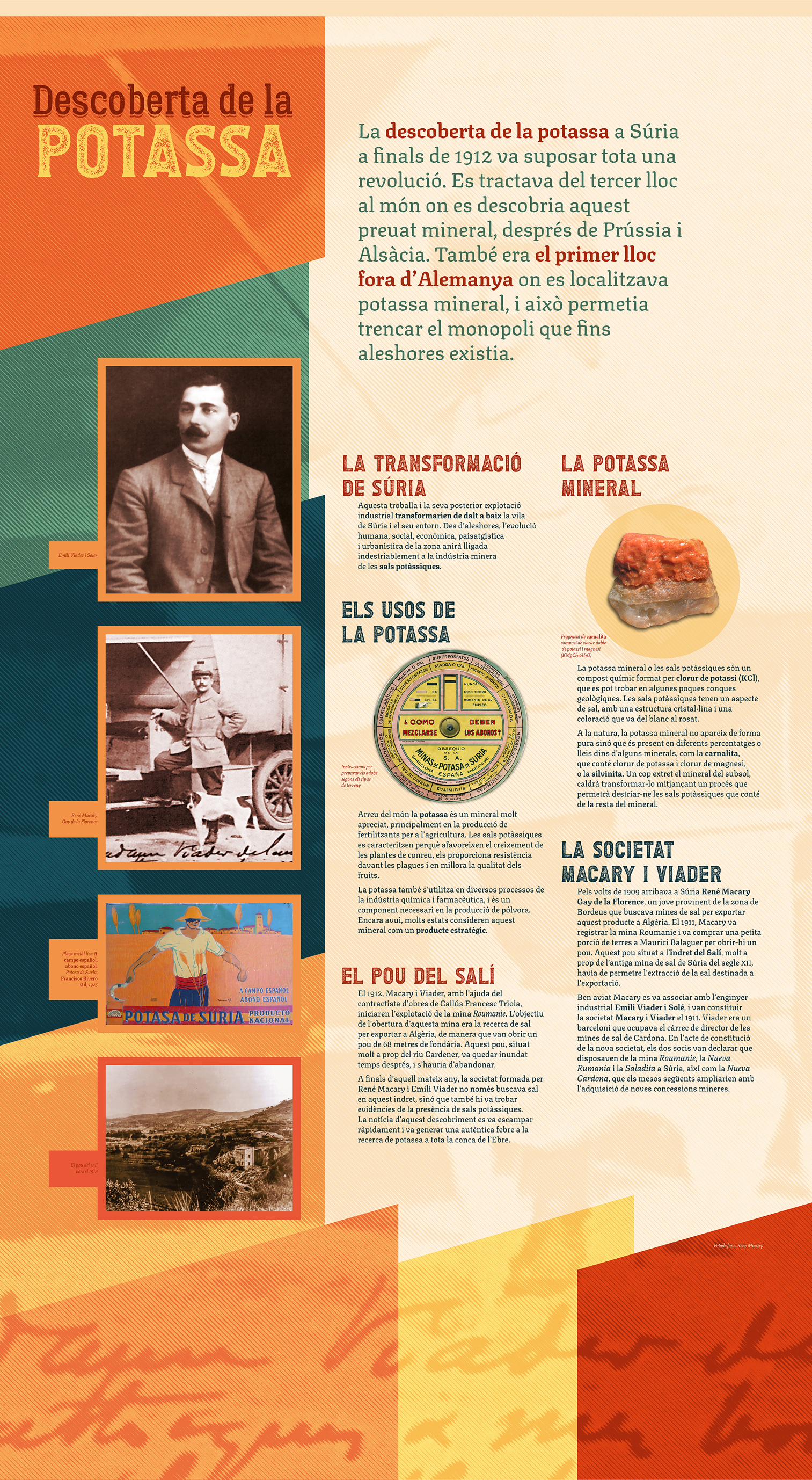3. THE DISCOVERY OF POTASH
The discovery of potash in Súria at the end of 1912 was a complete revolution, it was the third place in the world where this precious mineral was discovered, after Prussia and Alsace. It was also the first place outside of Germany where mineral potash was located, and this made it possible to break the monopoly that existed until then.
THE TRANSFORMATION OF SÚRIA
This find and its subsequent exploitation at an industrial level would transform the town of Súria and its surroundings from top to bottom. Since then, the human, social, economic, landscape and urban development of the area will be inextricably linked to the potassium salt mining industry.
THE MINERAL POTASH
The mineral potash, or potassium salts, is a chemical compound made up of potassium chloride (KCl), which can be found in a few geological basins. Potassium salts have a salt-like appearance, with a crystalline structure and a colour ranging from white to pink.
In nature, the mineral potash does not appear in pure form but is present in different percentages or laws within some minerals such as carnalite, which contains potassium chloride and magnesium chloride, or in sylvinite. Once the mineral has been extracted from the subsoil, it will need to be transformed through a process that will allow the potassium salts it contains to be removed from the rest of the mineral.
USES OF POTASH
All over the world potash is a highly valued mineral, mainly in the production of fertilizers for agriculture. Potassium salts are characterized by promoting the growth of agricultural plants, providing them with resistance to pests and improving the quality of the fruits.
Potash is also used in various processes in the chemical and pharmaceutical industries and is a necessary component in the production of gunpowder. Even today, this mineral is considered a strategic product by many states.
MACARY AND VIADER'S SOCIETY
Around 1909, René Macary Gay de la Florence, a young man from the Bordeaux area, arrived in Súria, looking for salt mines to export this product to Algeria. In 1911, Macary registered the Roumanie mine and bought a small portion of land from Maurici Balaguer, to open a shaft there. This shaft located in the place of El Salí, very close to the old salt mine of Súria from the 12th century, was supposed to allow the extraction of salt intended for export.
Very soon Macary partnered with the industrial engineer Emili Viader i Solé, and they would form the company Macary i Viader, in 1911. Viader was a Barcelonan who held the position of director of the Cardona salt mines. In the act of incorporation of the new company, the two partners declared that they had the Roumanie mine, the Nueva Rumania and the Saladita in Súria, as well as the Nueva Cardona, which in the following months they would expand with the acquisition of new mining concessions.
SALÍ'S SHAFT
In 1912, Macary and Viader, with the help of the Callús works contractor, Francesc Triola, began exploitation of the Roumanie mine. The purpose of opening this mine was the search for salt to export to Algeria, and with this aim, they opened a shaft 68 meters deep. This shaft, located very close to the Cardener River, would be flooded sometime later and would have to be abandoned.
At the end of that same year, the society formed by René Macary and Emili Viader, not only found salt in this place but also found evidence of the presence of potassium salts. The news of this discovery would spread quickly, generating a real fever in the search for potash throughout the Ebro basin.


